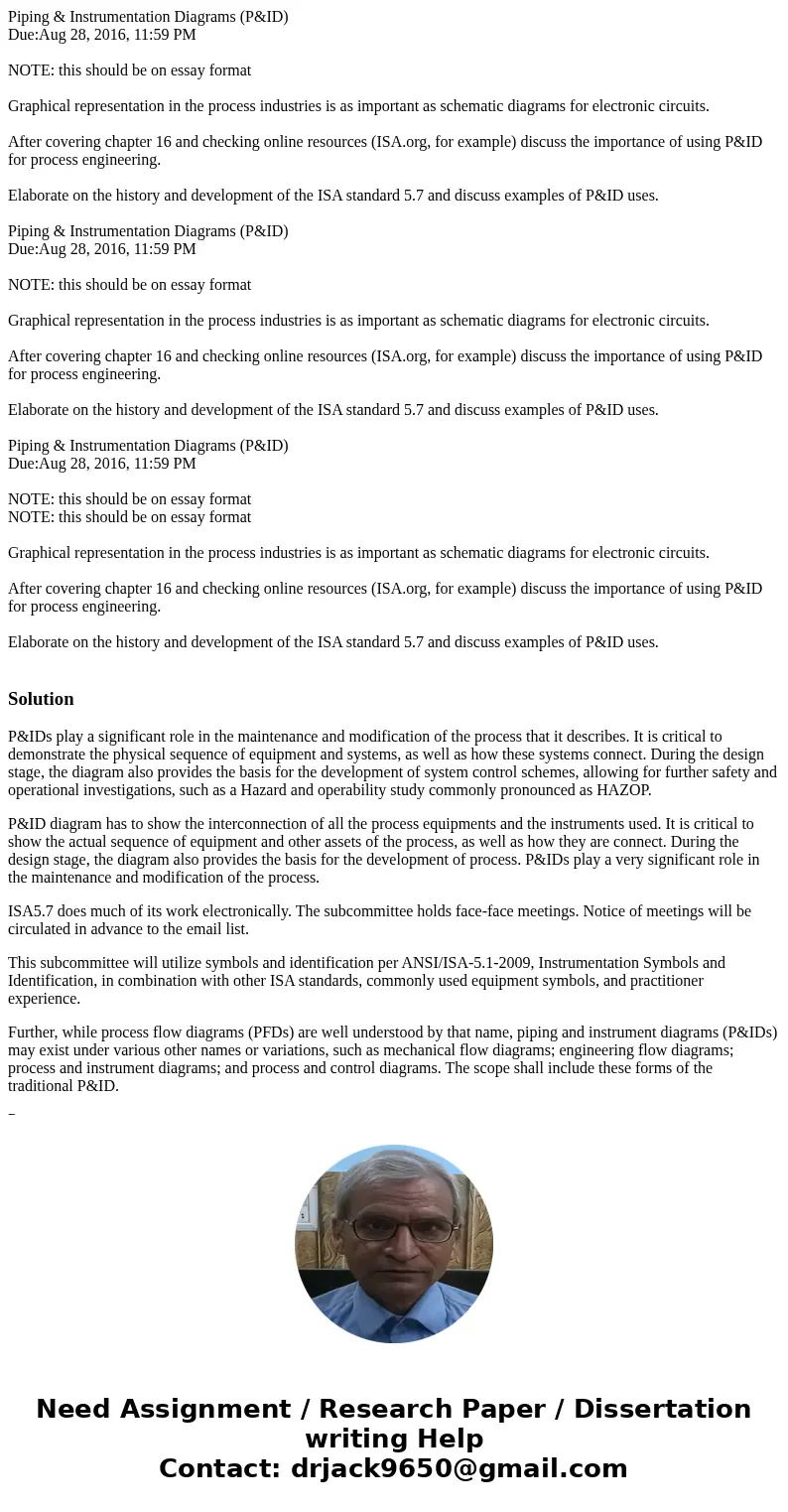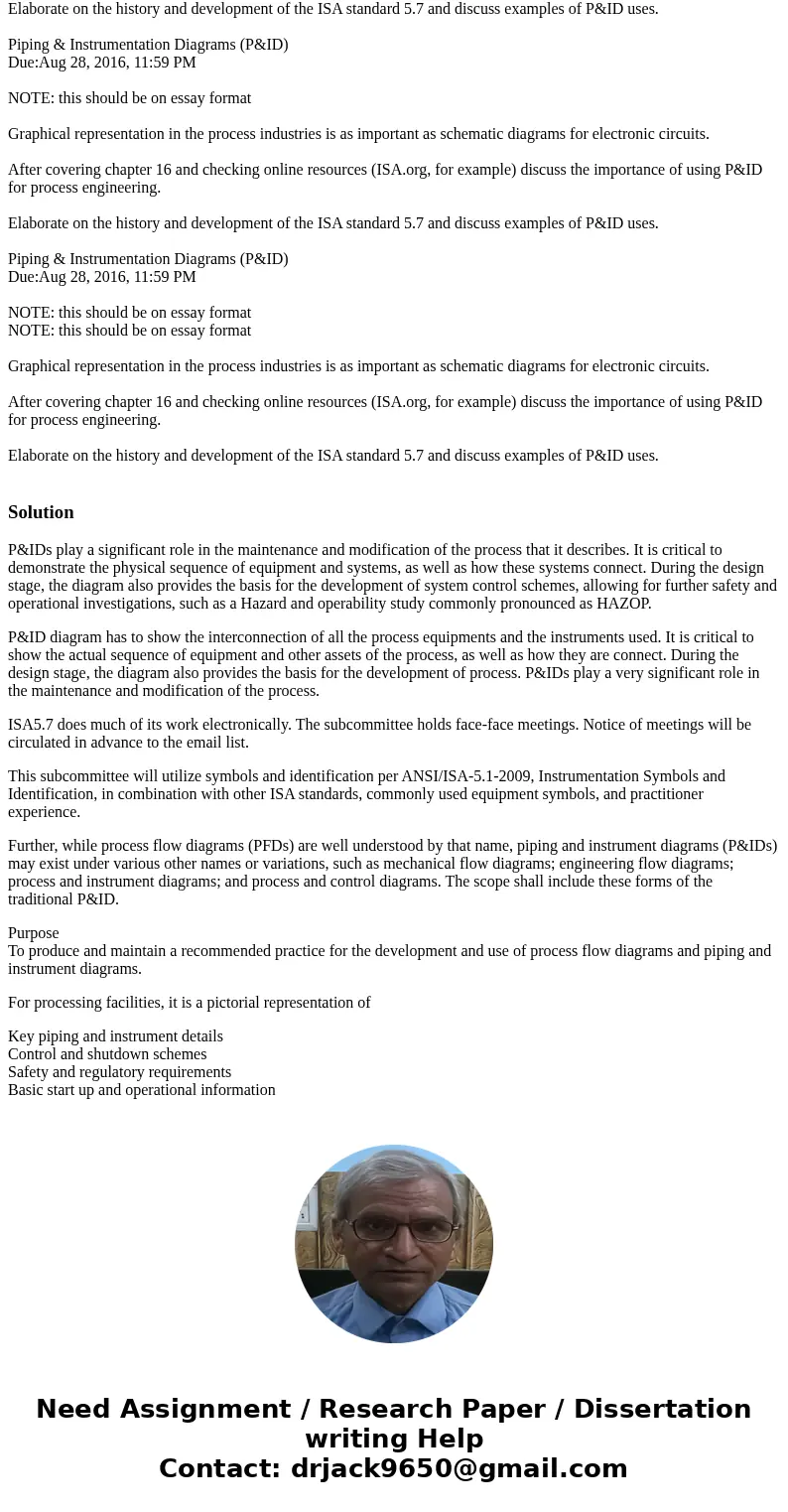Piping Instrumentation Diagrams PID DueAug 28 2016 1159 PM
Solution
P&IDs play a significant role in the maintenance and modification of the process that it describes. It is critical to demonstrate the physical sequence of equipment and systems, as well as how these systems connect. During the design stage, the diagram also provides the basis for the development of system control schemes, allowing for further safety and operational investigations, such as a Hazard and operability study commonly pronounced as HAZOP.
P&ID diagram has to show the interconnection of all the process equipments and the instruments used. It is critical to show the actual sequence of equipment and other assets of the process, as well as how they are connect. During the design stage, the diagram also provides the basis for the development of process. P&IDs play a very significant role in the maintenance and modification of the process.
ISA5.7 does much of its work electronically. The subcommittee holds face-face meetings. Notice of meetings will be circulated in advance to the email list.
This subcommittee will utilize symbols and identification per ANSI/ISA-5.1-2009, Instrumentation Symbols and Identification, in combination with other ISA standards, commonly used equipment symbols, and practitioner experience.
Further, while process flow diagrams (PFDs) are well understood by that name, piping and instrument diagrams (P&IDs) may exist under various other names or variations, such as mechanical flow diagrams; engineering flow diagrams; process and instrument diagrams; and process and control diagrams. The scope shall include these forms of the traditional P&ID.
Purpose
To produce and maintain a recommended practice for the development and use of process flow diagrams and piping and instrument diagrams.
For processing facilities, it is a pictorial representation of
Key piping and instrument details
Control and shutdown schemes
Safety and regulatory requirements
Basic start up and operational information


 Homework Sourse
Homework Sourse